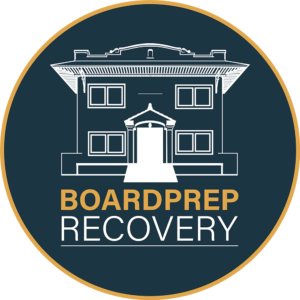“Substance use disorder remains the most serious illness to afflict pharmacists in their first 15 years of practice,” says Dr. Jeff Baldwin, PharmD, RPh, an emeritus professor in the Department of Pharmacy Practice and Science at the University of Nebraska Medical Center College of Pharmacy, in Omaha. Having co-authored two chapters of the 2018 ASHP book, The Pharmacist’s Guide to Opioid Use Disorders, he speaks with authority and a clear understanding of just how widespread the drug problem, particularly the opioid epidemic, is in the world of today’s pharmacists.[1]
In fact, research data indicates one out of every ten (10%) pharmacy professionals will become impaired and struggle with an SUD (a.k.a., chemical dependency or addiction to drugs or alcohol) at some point during their lifetime.[2]
One of the main risk factors for pharmacists developing a chemical dependency is the erroneous belief that their knowledge about medications will keep them clear of the grip of addiction, and therefore that they’re able to self-medicate safely. Baldwin points out, “The critical question for hospitals and pharmacies is not, will some pharmacists develop an SUD, but what to do when it happens. (The entire) profession needs to do a better job at recognizing and intervening to get help for practitioners with SUDs.”[3]
And he’s by no means alone in his unease over the current state of affairs. According to a survey by the American College of Healthcare Executives, one of the top five concerns of hospital CEOs across the country is the need to address behavioral health and addiction issues.[4]
Unfortunately, there’s a wide variance in terms of how to address impaired pharmacists, which has resulted in inconsistent, even substandard, treatment and recovery strategies, as well as a lack of transparency among pharmacists’ employers.
Jim Schiffer, RPh, Esq., an attorney at Allegaert, Berger & Vogel LLP, in New York City and a continuing education presenter at the Arnold & Marie Schwartz College of Pharmacy and Health Sciences of Long Island University, observes, “We have to clean up the pharmacy profession regarding addiction. Hospital administrators should act responsibly and ethically, by reporting addicted pharmacists who refuse help to the appropriate state pharmacy boards and, if they don’t get treated, be honest about these individuals’ job performance when asked for references.”[5]
Carolyn Liptak, RPh, MBA, the pharmacy executive director of the Pharmacy Performance Advisory Solutions Team in Irving, Texas, adds, “This isn’t just a pharmacy issue. It’s an institution issue. Hospitals should establish multidisciplinary anti-diversion teams, and create a culture where people can come forward to either report suspect behavior or seek help.”[6]
Fortunately, there are evidence-based, medication-assisted treatment programs that cater to chemically dependent healthcare professionals, providing a balanced combination of medication management, group support, sanctions and structured follow-up care (including ongoing monitoring and random drug testing). Many of these programs were modeled after state physician health programs that were part of a longitudinal study from 1995 to 2007. The authors of that research reported nearly 80% of physicians who entered the programs were licensed and working at the 5-year follow-up mark.[7]
Given there are effective treatment options for impaired pharmacists, what other means are available to improve the situation being faced by those working in the pharmaceutical field today? Here are 5 ways to decrease the risk of pharmacists developing a chemical dependency:
- To lower risk, hospitals should conduct comprehensive background checks, preemployment drug tests and random drug tests. Staff should be trained to spot substance use disorder (SUD)-related behaviors, use anti-diversion technologies, and establish human resources policies and insurance coverage around SUDs.
- Hospitals need to conform to Drug Enforcement Administration and state pharmacy board-controlled substances loss reporting requirements, conduct mandated audits, maintain perpetual inventory, and establish safe, accountable processes for Schedule III, IV and V drugs.
- Hospitals should be familiar with state treatment programs. Many states allow pharmacists with SUDs who adhere to all pharmacist recovery network program recommendations to continue confidential treatment without being reported to the state pharmacy board. Referring to a state-sponsored program is a vital step toward recovery.
- Hospitals should impose a recovery contract for any pharmacist with an SUD. These contracts, which typically last for five years, usually define SUD treatment expectations, work restrictions, controlled substance access limitations, requirements for recovery support group meeting attendance, use of a single prescriber to approve all prescription and over-the-counter medications and supplements, and avoidance of substances causing SUDs. Work restrictions can vary from minor practice restrictions to prohibition of practice for some or all of the contract period.
- If hiring a recovering pharmacist, keep temptations away—no lone or late-night shifts, no access to controlled substances, and no pharmacist-in-charge roles, often for up to one year. They can become model employees, helping to stop diversion and helping other addicted pharmacists.[8]
[1][1] Norton, Merrill. The Pharmacist’s Guide to Opioid Use Disorders. American Society of Health-System Pharmacists. 2018.
[2] Baldisseri, M.R. “Impaired Healthcare Professional.” Critical Care Medicine. February 2007.
[3] Heller, Al. “A Tale of Pharmacist Addiction.” Pharmacy Practice News. May 1, 2019.
[4] American College of Healthcare Executives. “Top Issues Confronting Hospitals in 2018.”
[5] Ibid.
[6] Ibid.
[7] McLellan, A.T., et al. “Five-year outcomes in a cohort study of physicians treated for substance use disorders in the United States.” British Medical Journal. Nov. 4, 2008.
[8] Interviews with Jeff Baldwin, PharmD, RPh; Brian Fingerson, RPh; Carlos Aquino; and Jim Schiffer, RPh, Esq. – Heller, Al. “A Tale of Pharmacist Addiction.” Pharmacy Practice News. May 1, 2019.







